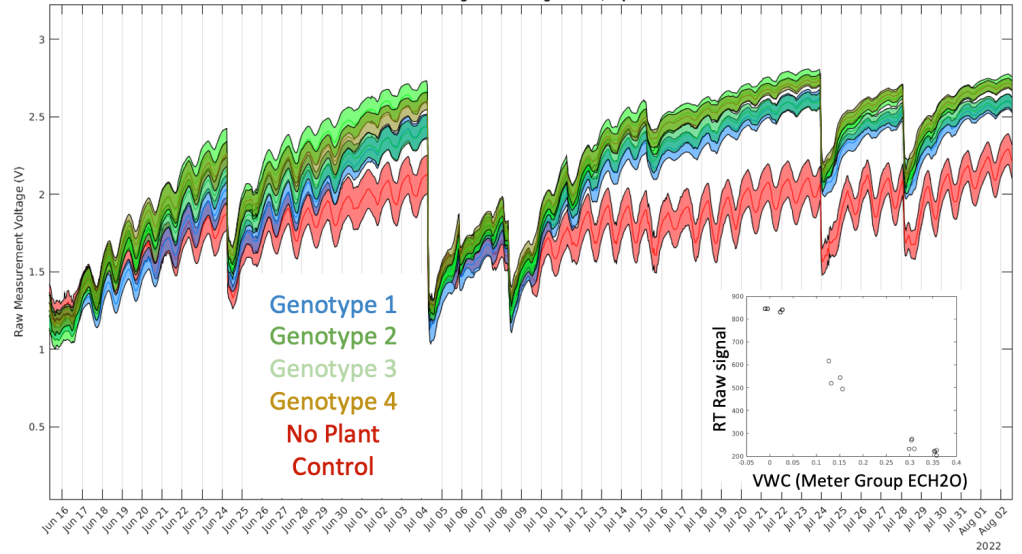Nitrous oxide (N2O) is a greenhouse gas that is 300x more potent than carbon dioxide. It is primarily produced by microbes in soil, and its emissions can be reduced by crops with better nitrogen uptake efficiency and greater root production. In two pilot studies, HFG used RootTracker technology to measure root growth dynamics and weekly N2O emissions in corn and soy crops. In both years, they found an inverse relationship between N2O emissions and root detection rate.
Drying Metric
Additionally, I developed a metric called the drying metric (the drying metric: no-plant-control normalized mean daily change in voltage / voltage), which can be used to comparatively assess how quickly soil dries within a field trial. This metric is based on the raw RootTracker voltage signal, which is impacted by soil moisture. I used the drying metric to highlight genotype-specific differences in soil drying rates (and potentially root water uptake) from a field trial at Iowa State University in 2022. These differences demonstrated consistency across multiple locations in the field. This new metric added another dimension of RootTracker data in assessing root dynamics.

Impact
Localizing the drying metric to RootTracker electrodes within certain depth bins showed an inverse relationship between the drying metric and N2O emissions within specific time periods (similarly to N2O vs root detections). Capturing these relationships with N2O provided compelling evidence of a feasible proxy to direct (and expensive) N2O measurements, suggesting a promising tool for breeding or selecting for crops that reduce N2O emissions.

